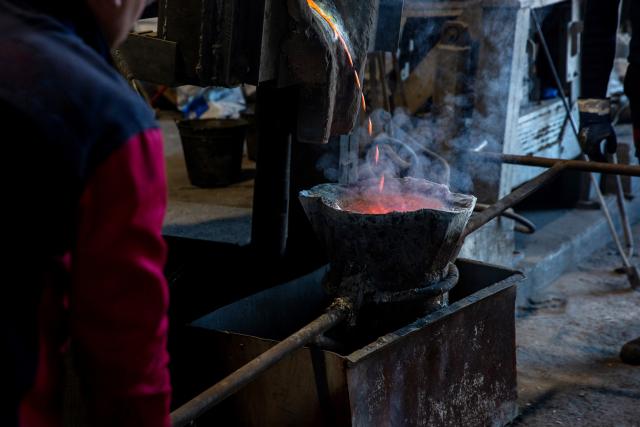
The importance of steel in modern era is beyond imagination. It finds applications in everything from bridges and buildings to appliances and cars. But have you ever wondered what goes into creating this universal material?
One might guess iron ore and limestone, but that is not all. Apart from these primary ingredients, there lies an unsung hero who plays a key role in the production of high-quality steel. And that ingredient is dolomite.
Dolomite is being used in a variety of industries and steel manufacturing is no exception. It acts as a fluxing agent in iron and steel products, removing impurities like sulfur from molten metal. Adoption of dolomite for steelmaking processes is becoming a key growth driver for the industry.
Similarly, dolomite is employed to stabilize the slag and improve steel quality, leading to its higher demand. According to Coherent Market Insights, the global dolomite industry is set to exhibit a CAGR of 5% during the forecast period, totaling US$ 4337.1 million by 2030.
Role of Dolomite in Steelmaking
Usage of dolomite is significantly increasing in the steelmaking processes. It is mainly used as a fluxing agent and refractive raw material. Further, it also protects refractory linings.
In iron and steel industry, dolomite is generally used in three forms. These include raw dolomite, calcined dolomite, and sintered dolomite.
- Fluxing Agent
The primary application of dolomite in steelmaking is to remove various impurities. It acts as a fluxing agent, removing impurities like sulfur and alumina from iron ore. Dolomite reacts with these impurities to form a slag which is then easily separated from the molten metal.
Dolomite also reduces the consumption of calcined lime in steelmaking by sourcing some lime (CaO). Apart from this, it also protects refractory linings from corrosion, extending the lifespan of steelmaking equipment.
- Refractory Material
Another key application of dolomite is its usage as a refractory material. Dolomite possesses high resistance to heat, wear, and corrosion. As a result, it is widely used as a refractory lining material in basic oxygen furnaces and electric arc furnaces.
Dolomite significantly improves the durability and thermal resistance of furnace linings in steelmaking industry. Dolomitic lime contains high amounts of magnesium oxide. Thus, it has a lower propensity to cause slag to dissolve magnesium oxide from the refractory of the furnace.
Refractory bricks used inside furnaces and converters are often made from dolomite. These dolomite-based bricks can withstand extreme temperatures and corrosive conditions in the steelmaking process.
- Desulfurization
Dolomite is also being used as a desulfurization agent in steel manufacturing processes. This is due to its tendency to remove sulfur from molten steel. By doing so, it can significantly improve the properties of steel.
- Slag Conditioner
Many steelmaking companies use dolomite as a slag conditioner. It is added to the slag to modify its properties like fluidity and viscosity. This, in turn, helps to improve the efficiency of steelmaking process and enhance steel purity.
Benefits of Dolomite in Steel Manufacturing
Usage of dolomite is increasing significantly in steel manufacturing industry. This is because it offers various advantages. For instance, dolomite is
- relatively cost-effective than many other fluxing agents
- highly effective at removing impurities from steel
- good at protecting furnaces from damage, and
- environmentally friendly







